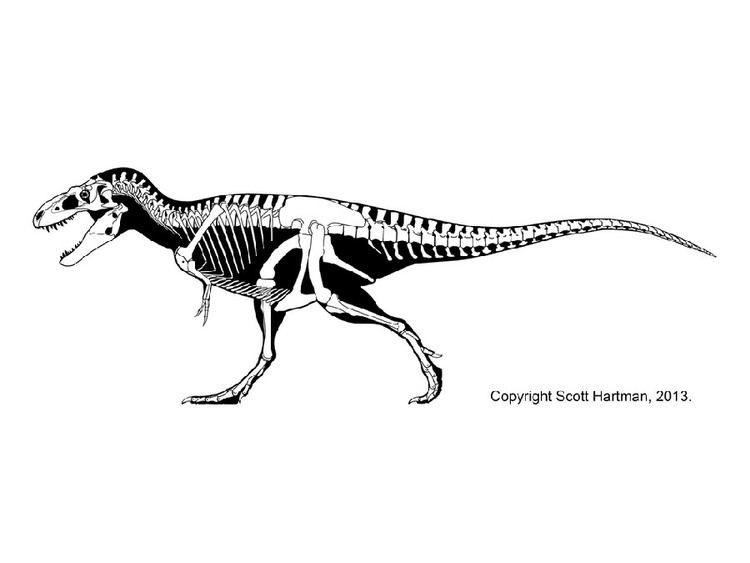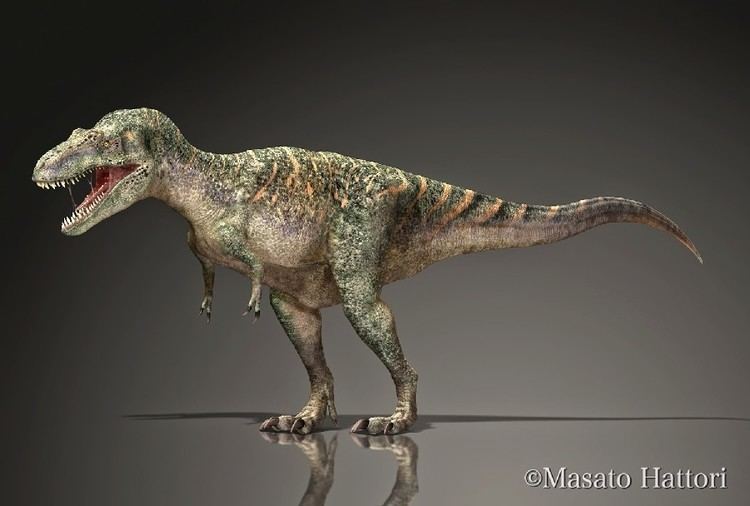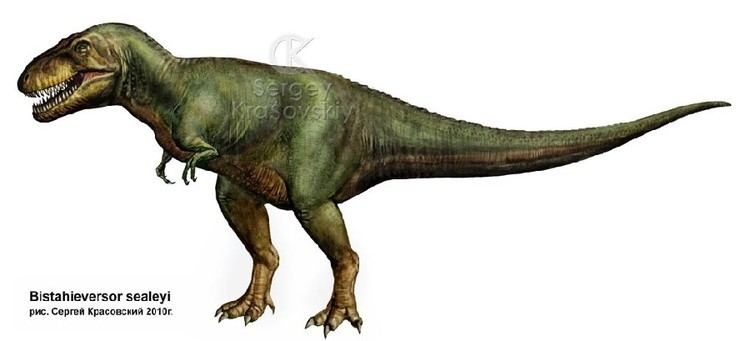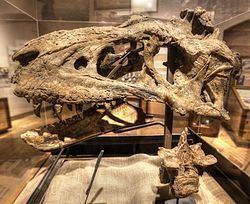Kingdom Animalia Clade Dinosauria Family †Tyrannosauridae Phylum Chordata Order Saurischia | Class Reptilia Suborder Theropoda Subfamily †Tyrannosaurinae Rank Genus | |
 | ||
Similar Appalachiosaurus, Xiongguanlong, Teratophoneus, Lythronax, Sinotyrannus | ||
Ppba bistahieversor vs tyrannosaurus
Bistahieversor (meaning "Bistahi destroyer") is a genus of tyrannosaurid dinosaur. Bistahieversor existed in the Late Cretaceous Hunter Wash member of the Kirtland Formation, which has been dated to 74.55 ± 0.29 Ma.
Contents
- Ppba bistahieversor vs tyrannosaurus
- Ppba bistahieversor vs lythronax
- Description
- History of discovery
- Classification
- References

The name Bistahieversor comes from the Navajo Bistahí, or "place of the adobe formations" in reference to the Bisti/De-Na-Zin Wilderness where it was found, and eversor, meaning "destroyer."

Ppba bistahieversor vs lythronax
Description

Material from both adolescent and adult individuals has been found in the Kirtland Formation of New Mexico, United States. Adult Bistahieversor are estimated to have been around 9 metres (30 ft) long, weighing at least a ton. The snout is deep, indicating that the feature is not unique to more derived tyrannosaurs such as Tyrannosaurus. Geographical barriers such as the newly forming Rocky Mountains may have isolated the more southerly Bistahieversor from more derived northern tyrannosaurs.
Bistahieversor differs from other tyrannosaurs in the possession of 64 teeth, an extra opening above the eye, and a keel along the lower jaw. The opening above the eye is thought to have accommodated an air sac that would have lightened the skull's weight. Bistahieversor also had a complex joint at its "forehead" that would have stabilized the skull, preventing movement at the joint.
History of discovery
The first remains now attributed to Bistahieversor, a partial skull and skeleton, were described in 1990 as a specimen of Aublysodon. Additional remains, consisting of the incomplete skull and skeleton of a juvenile, were described in 1992. Another, complete, skull and partial skeleton were found in the Bisti/De-Na-Zin Wilderness of New Mexico in 1998, known colloquially as the "Bisti Beast". In a 2000 paper, Thomas Carr and Thomas Williamson re-examined these four specimens and suggested that they did not belong to Aublysodon, but rather to one or more new species of Daspletosaurus. However, it was not until 2010 that Carr and Williamson published a thorough re-description of the specimens and found that they belonged to a new genus and species of more generalized tyrannosauroid, which they named Bistahieversor sealeyi.
Classification
Bistahieversor is a genus of derived dinosaur currently classified in the subfamily Tyrannosaurinae. It is more derived than Teratophoneus but less derived than Lythronax. It forms the sister taxon of a group including Lythronax, Nanuqsaurus, Tyrannosaurus, Tarbosaurus and Zhuchengtyrannus.
Below is a cladogram illustrating the relationships of all tyrannosaurid genera:
